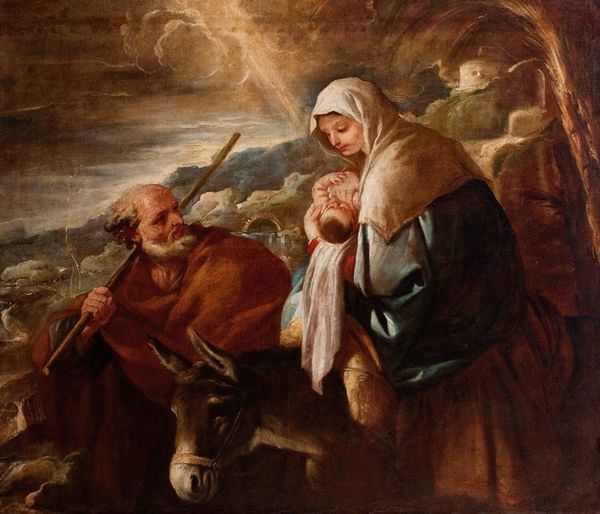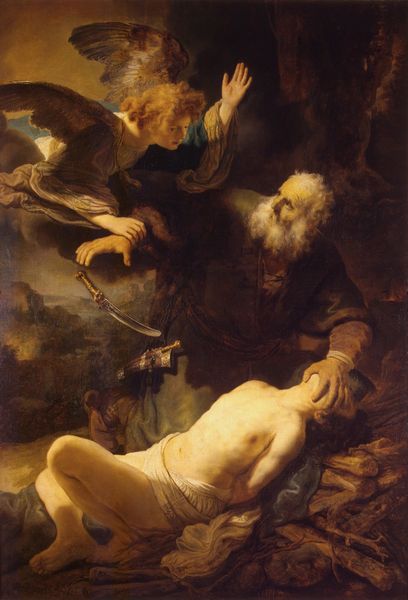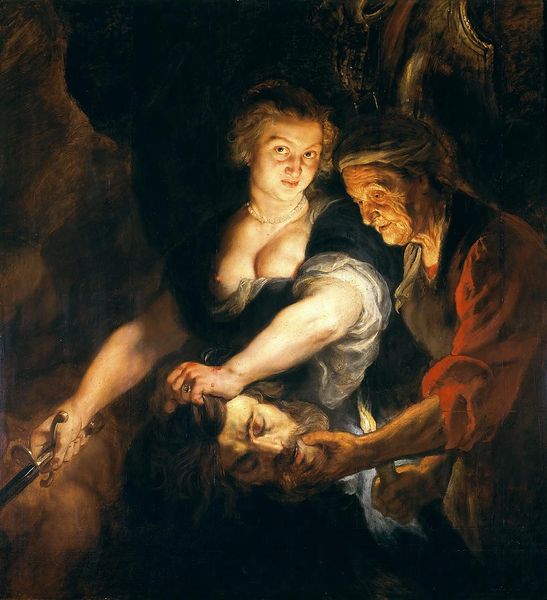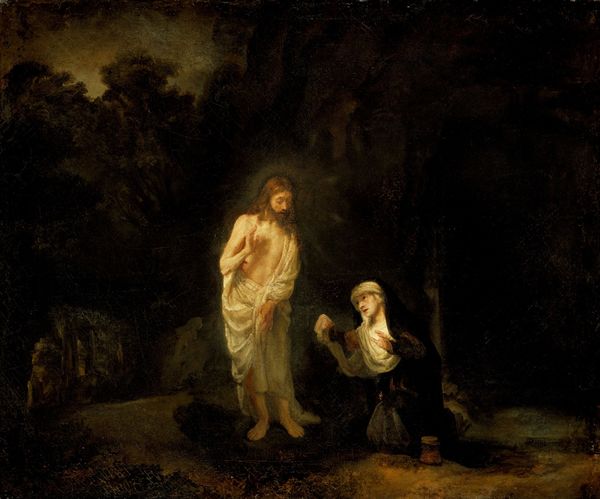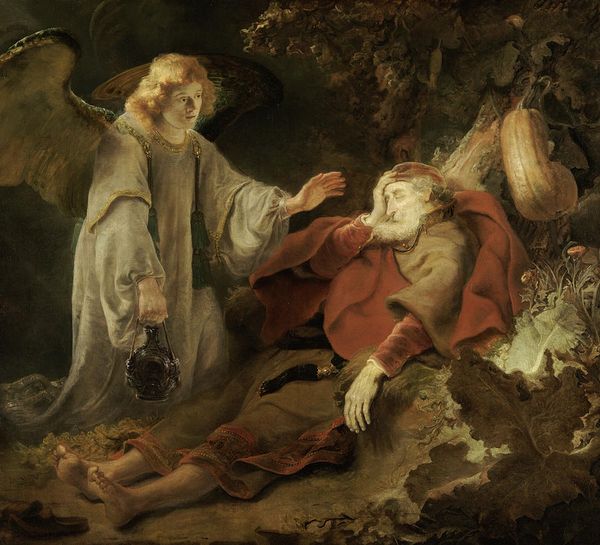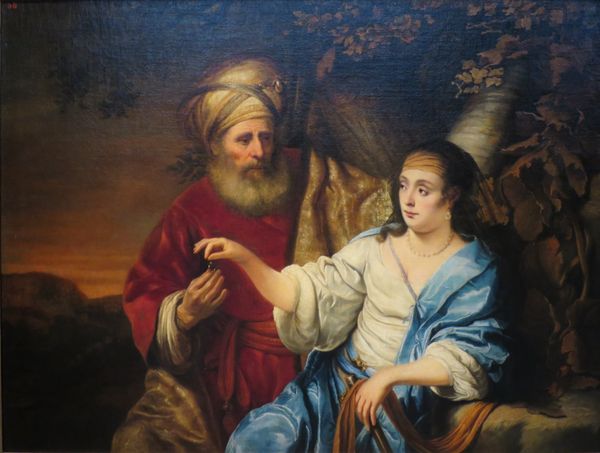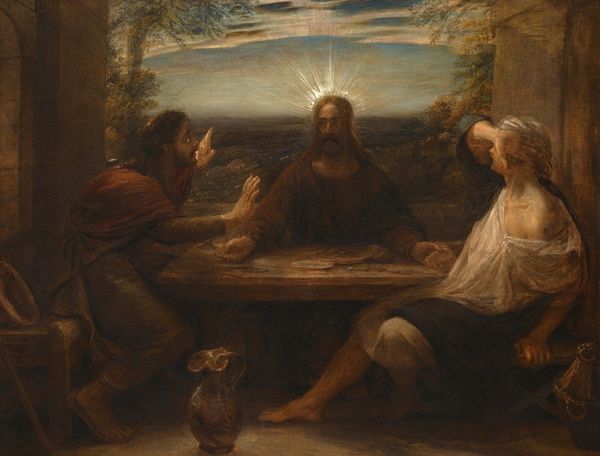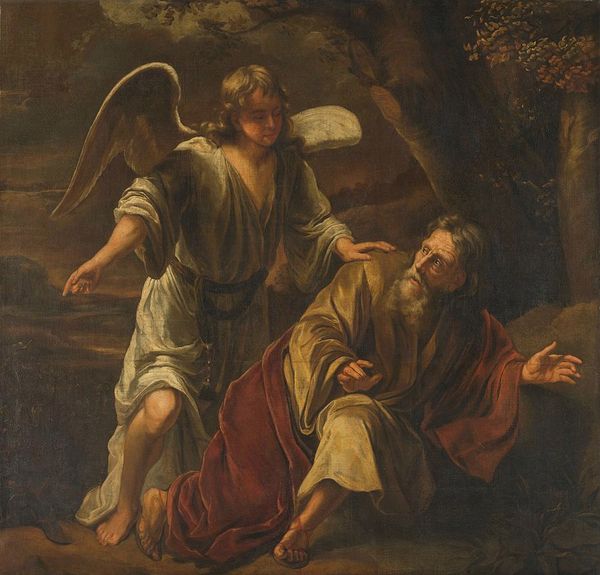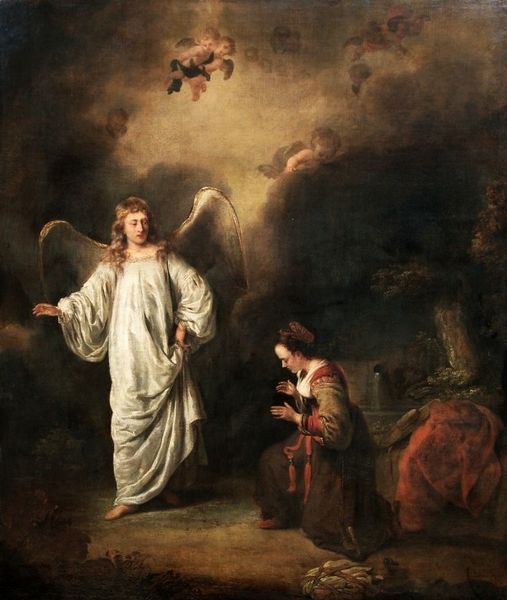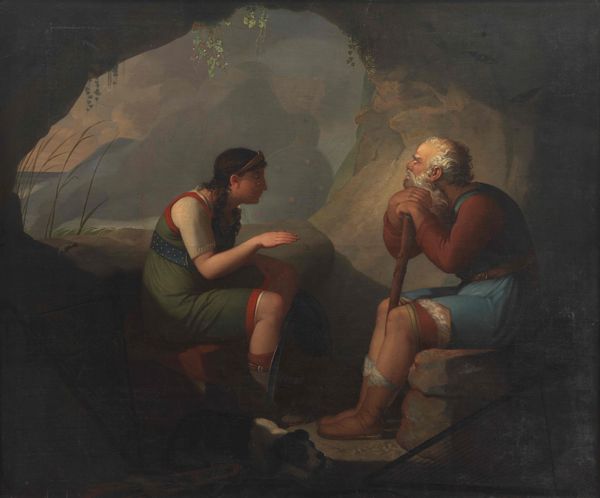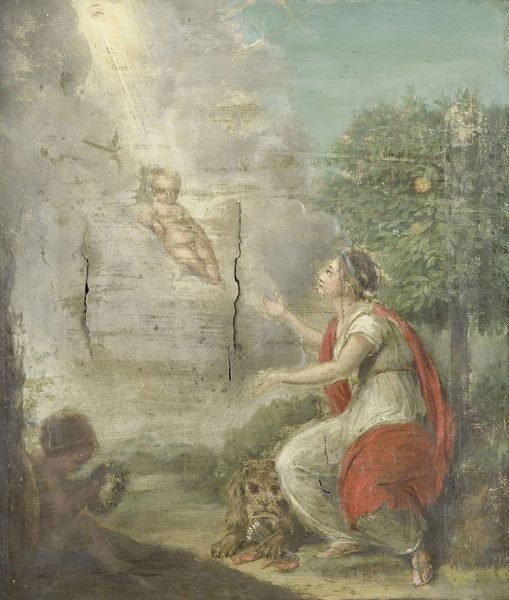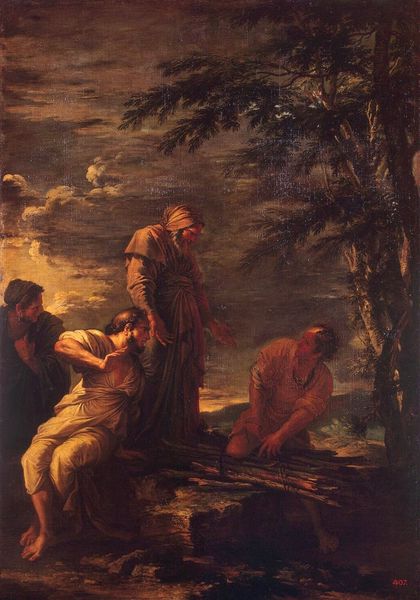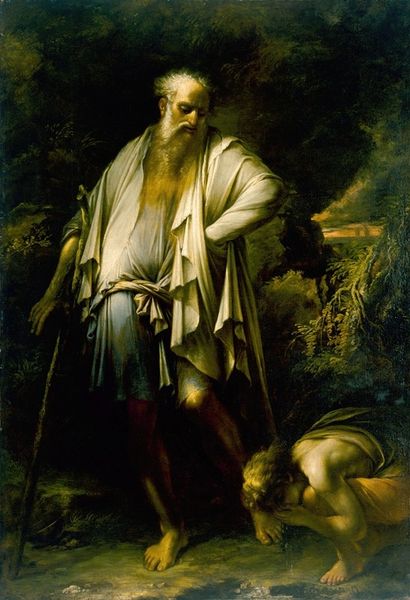
Ossian and Alpin's Son Hearing the Spirit of Malvina Touching the Harp. Illustrating Ossian's Swansong 1816
0:00
0:00
painting, oil-paint
#
portrait
#
allegory
#
narrative-art
#
painting
#
oil-paint
#
landscape
#
figuration
#
romanticism
#
history-painting
Dimensions: 115.5 cm (height) x 89.5 cm (width) (Netto)
Curator: Here we have C.G. Kratzenstein Stub's "Ossian and Alpin's Son Hearing the Spirit of Malvina Touching the Harp. Illustrating Ossian's Swansong," created in 1816. Editor: My initial impression is one of melancholy. There's a tangible sadness emanating from the figures, intensified by the muted tones. Curator: Indeed, that subdued palette serves a purpose. The artwork is heavily influenced by the Ossianic poems, immensely popular at the time. These poems, presented as translations of ancient Gaelic bards, stirred Romanticism’s interest in nationalism, folk traditions, and a fabricated, glorified past. Editor: So the ghostlike Malvina touching the harp carries quite a weight, acting almost as a cultural icon, reminding us of longing for something that has been lost to the past. The harp itself reinforces this; the instrument often symbolizes memory. Curator: Absolutely. We see the complex dynamics of identity formation at play. Stub employs allegory and symbolism in this narrative scene to engage in conversations about Scottish history and identity within the framework of Danish Romanticism. Look at Ossian’s son, his youthful vigor, perhaps representing the hope for cultural rebirth while juxtaposed with the older Ossian in reflective contemplation. Editor: The positioning of the figures enhances that feeling of melancholic reflection. The older man, weary and seated, anchors the composition, while the spirit, rendered almost ethereally, drifts above, as if carried by the breeze. It’s fascinating how this artist used recognizable archetypes of folklore and national pride. I'm also intrigued by how the inclusion of the dog might indicate faithfulness, companionship and remembrance. Curator: And it’s not just Scottish identity being debated. We must think of Denmark's identity following the Napoleonic Wars. This artwork, created with oil paint on canvas, exists as an entry point into wider debates about what it means to remember, mourn, and, essentially, create a national narrative in the aftermath of trauma. Editor: Ultimately, Stub seems to be questioning not just a specific cultural identity but also universal experiences related to mortality and the power of memory. Curator: This canvas reminds us that artwork doesn't exist in a vacuum, they’re actively part of ongoing dialogue about culture, loss, and meaning making. Editor: Precisely, it provides a lens to reflect on how symbols operate, what they conceal, and how we continue to imbue them with relevance across time.
Comments
No comments
Be the first to comment and join the conversation on the ultimate creative platform.
